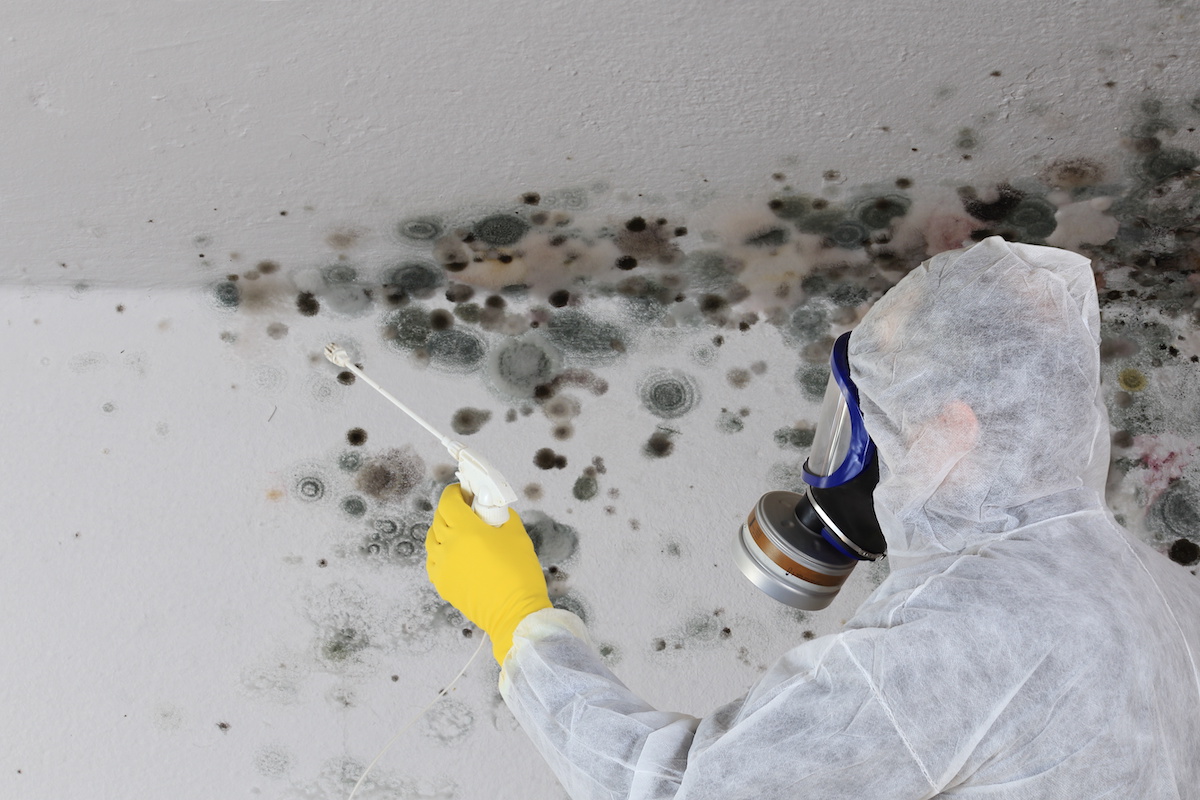March is Mold Month Part 2 – Preventing and Handling Mold

April showers bring May flowers, but do you know what else can come with the increased moisture? Right! Mold. Somebody has been following our blog this month! To get ahead of any potential mold trouble, this time on the BioClean Team blog we’re talking mold prevention and how to handle it when it does creep up! Without further preamble let’s get into it.
How to Prevent Mold Contamination and Growth?
Mold can grow just about everywhere so long as there is a little bit of moisture present. Even in deserts after a bad storm mold can crop up. With that in mind then the best way to prevent mold is to limit the amount of moisture in the air.
First – Find the source of the moisture in your home or building and get rid of it. If there’s a leak, fix it, if it’s pooling water from rain look at finding some drainage solutions.
Now keep the humidity between 30-50% using the following methods:
- Vent showers, laundry rooms, and other sources of moisture to the outside.
- Use air conditioners or dehumidifiers to control humidity
- Use your exhaust fans when cooking, cleaning, or laundering food to send moisture outdoors
- Insulate cold surfaces to prevent condensation build up
- Make sure the HVAC system is well maintained
- Any floods or spills should be cleaned up immediately to prevent the moisture from spreading
- Reduce how much water is used when carpet cleaning
- Avoid installing carpet close to water fixtures or near areas prone to leaks, condensation or flooding
To stay even further on top of it, there are devices you can purchase that measure and monitor the moisture levels of things such as drywall and wood.
Ok, so you know how to prevent it – now what about cleaning it up?
How to Clean Up Mold?
When it comes time to clean up the mold, the first step is to find out why the mold is present/why the moisture was so high. Once you have identified this, FIX IT FIRST. If you let a leak continue any cleanup efforts will be fighting an uphill battle as the moisture will just keep supporting the mold growth. That’s no good!
When mold has been spotted, any porous material (drywall, ceiling tiles, books, paper, cardboard, fabrics) needs to be thrown out and replaced. It may even be necessary to toss carpets, cushions, mattresses, furniture, etc. because spores can live inside these materials and come back down the line.
Ok, with that out of the way how to clean up the mold: Hire a Trained, Certified Cleaner! Even small patches of mold require the proper equipment and training to clean and sanitize safely!
Now, when it comes down to how to clean up the mold it really does depend on the extent of the damage.
Homeowners can clean a small area themselves with soap and water, if it reappears after you’ve cleaned it, then something isn’t quite right and you need a professional.
Here are some general steps to dealing with a single small isolated area (no larger than a couple of square feet).
- Use a mask/respiratory protection such as an N-95 disposable respirator
- Use rubber gloves and eye protection
- Remove any materials that will be difficult to clean and/or seal with plastic sheeting and tape to prevent any spread of mold or dust
- Clean the surfaces with soap or detergent solution
- Don’t get your drywall too wet
- Avoid kicking up dust
- While cleaning the area, make sure it is only used by those cleaning it with proper protection on
For anything much larger than that it is crucial that you call an expert who can do the job safely and correctly. The BioClean Team is here to help!
